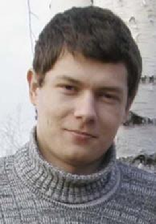Microstructure and macroscopic properties of polydisperse systems of hard spheres
Promotion date: May 2.
Promotor: Prof.dr. Stefan Luding
| Systems of polydisperse smooth hard spheres were investigated. Goals include the development of a fast contact detection algorithm for computer modeling; the development of macroscopic constitutive laws that are based on microscopic features such as the moments of the particle size distribution; and the development of new analysis techniques to study the microstructures in such systems with different physical behavior, i.e. gaseous, liquid, glassy and crystalline states. A new efficient Hierarchical Grid algorithm for contact detection was presented which increases performance even with increasing degree of polydispersity. Not only the algorithm was developed, but also recipes were given on how to use it most efficiently. It was found that five ‘moments’ suffice to describe properties of polydisperse fluid mixtures for all densities, including glassy non-equilibrium states and maximal (jamming) density. Hence, polydisperse mixtures can be modeled by a well-chosen and much simpler tridisperse system. A common microstructural feature of four coplanar particles was observed in crystalline and glassy jammed states, suggesting the presence of "hidden" two-dimensional order in three-dimensional random close packings.
|
Was your research fundamental in nature?
My work involved physics theory and algorithm development, in order to mimic experiments in complex physical systems by performing computer simulations. The research was more on the general and fundamental side, involving the behavior of differently sized (polydisperse) spheres in divergent bulk environments. Working on polydisperse systems in a way like this, can give rise to insights on various application levels.
What skills did you develop during your PhD research period?
Especially my use of the English language improved, both in communicating with colleagues as in publications and during presentations, talking about my research for groups exceeding over fifty persons. Also I liked to work with students very much, taking exams, lecturing and teaching them about my research field, finding new ways to explain the complicated problems involved.
My research skills improved, formulating research topics more precisely in order to come up with new solutions. Gradually I paid more attention to the input colleagues provided, and I learned to study the literature available more profoundly.
Another skill I developed was providing photo and video recordings using specialized software tools in order to visualize my research findings better. This resulted in a cover feature in one of the journals.
I published my findings in: Soft Matter, Journal of Chemical Physics, Physical Review E, and other journals. In total seven journal articles were published.
What are your future plans?
At the moment I am working at a GPS navigation company in Amsterdam. This certainly is a different field of research in which I bring in my programming skills and analytical way of thinking and problem solving. The results of my work find their way into market products quickly, as market positions change very rapidly.
In academia, the long-term perspective is more common than in industry, varying from five onto ten years or even more. One is able to go into detail much more, developing personal ideas that belong to you. It is a great feeling to be given the chance to show them right.
Perhaps in future I would like to return back to academia. At the moment, I am happy working here in Amsterdam, which is a great city to live in.

